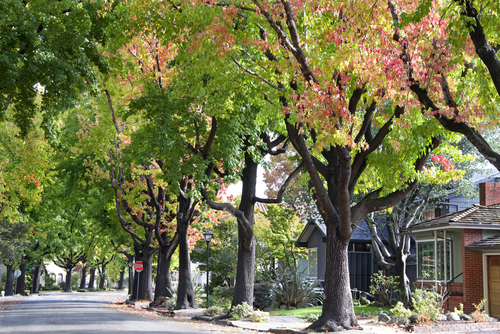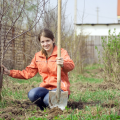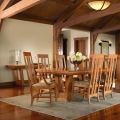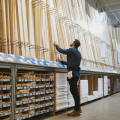When it comes time to plant trees, it’s important to stay with a native species. Why is this recommended? Well, there are a number of reasons, but because they are already adapted to local environmental conditions, they require less water, which in turn saves time and money as well. Add that on top of all the benefits when it comes to your family, the nearby wildlife and community as a whole, you’ll realize that native trees are the best way to go.

First of all, they’re beautiful. When planting new shrubbery of any type, you love to reap the benefits of its beauty, and that will certainly be the case here. Many native plants have beautiful flowers, produce fruits and seeds, and even are diverse with their appearance as the seasons change. Not only are they perfect for the environment you’re living in, but they are aesthetically pleasing as well! On those breezy spring or fall days, when you have no concrete plans, you can just pull up a chair and relax outside and take in the natural ambiance. Nothing could be better.
Planting an array of native trees also provides shade for those grueling summer months, which helps you conserve money on air conditioning. Rather than using air conditioning every time you start to feel warm, you can go outside or simply pop open a window. The breeze that the trees provide should help offset some of your heat discomfort, and it will provide you with cost savings too!
Next, the health benefits for those living around an area inhabited by native plants are vast. Lawns and mulched landscapes are well known for requiring artificial fertilizers and chemical pesticides and herbicides. According to Audubon.org, the traditional suburban lawn has 10 times more chemical pesticides per acre than farmland. That’s clearly not the kind of things you want yourself and your family to be breathing in every day. Native species are not only healthier for animals and nearby wildlife, but it’s a safer living situation for you, your family and the community you’re living in as a whole.
Landscaping with native trees can help the climate. Lawnmower exhaust causes pollution and is loud. With native trees, that sound is eliminated and there’s no pollution involved. As mentioned previously, the conservation of water is also a bigger point to stress. Native trees are adaptable, and that means they’re easier to maintain. Water is a precious resource, and you can save a considerable amount of it in the long run when you stick to native trees. This can also have a considerable impact on your local carbon footprint, and that can’t be understated.
Going with native species of trees is a big deal for the local wildlife, which varies depending on your area. Various local butterflies and moths, as well as other species, depend on very specific native trees to survive. Think about all of the benefits of native trees, which also include a protective cover for animals, seeds, nuts and fruits for squirrels and other mammals, the same benefits for birds and nectar for hummingbirds and butterflies. Deer, for one, are adaptable and eat a wide variety of plans, but they tend to go with native plants to the area. Although sometimes they can be a bit picky, going with native trees insures that deer won’t be made sick by the additives that are included with non-native trees. It’s common sense that greenery that’s not treated with unnatural additives would be more healthy to eat than the alternative. Your decision to go native helps them thrive, and you’ll also get a beautiful variety of living things to share your community with.
The money-saving aspect cannot be ignored when looking into whether or not to go with native trees. One study by Applied Ecological Services (Brodhead, WI) estimated that over a 20-year period, the cost of maintaining a prairie or wetland costs approximately $3,000 per acre, as opposed to $20,000 per acre in non-native turf grasses. That’s a considerable difference that can really add up, especially if you have a very large property you’re dealing with. For example, if you have 10 acres of land, it would cost either $30,000 per acre over 20 years or $200,000 per acre. Which one would you rather pay? I think most of us would be in agreement on this one.
Native trees also create deep and extensive root systems, which help stabilize the soil. They also absorb excess nutrients that result from runoff, which enhances infiltration during periods of heavy rain or drought. Truly, native trees are a resilient bunch.
Ultimately, it would seem almost negligent to go with trees that are not native to your area. There are many options, and the benefits are vast. From cost savings and environmental efficiency to the effects on animal life and overall beauty, going with native trees would seem like a slam dunk for any interested party.
If you’re still not convinced of whether to native trees or not, call an arborist in your area.This extra step could save you a lot of heartache in the long run as you want to make sure you make the best decision possible so the environment and your local area can flourish for years to come.




















